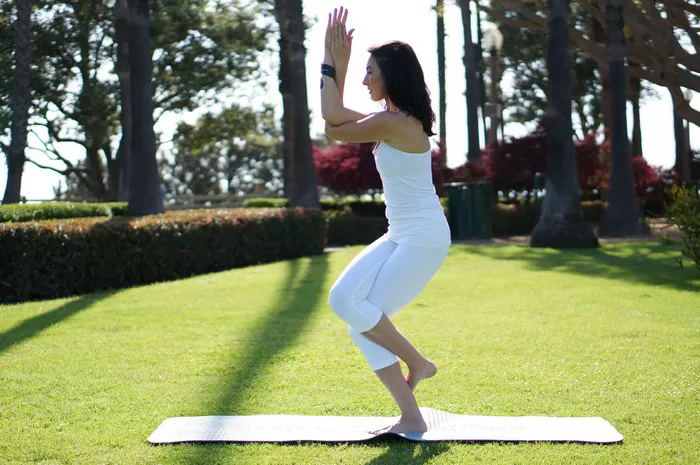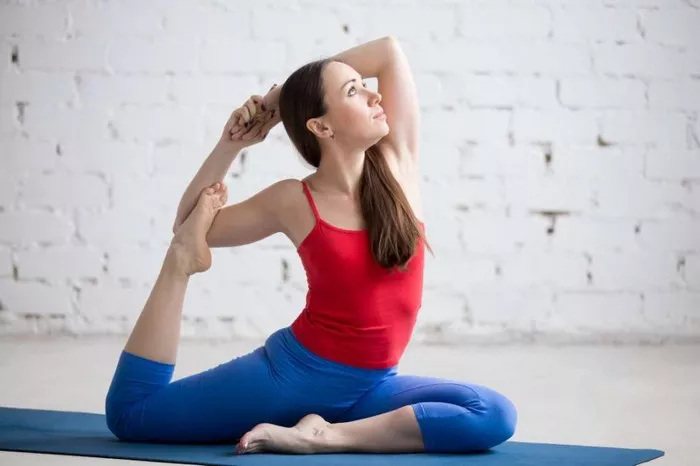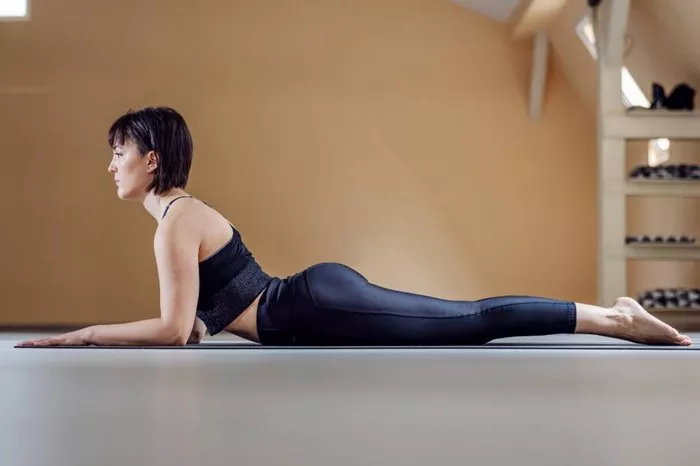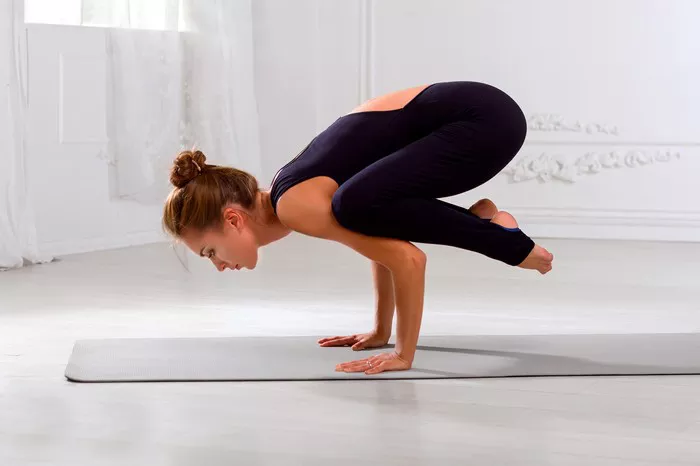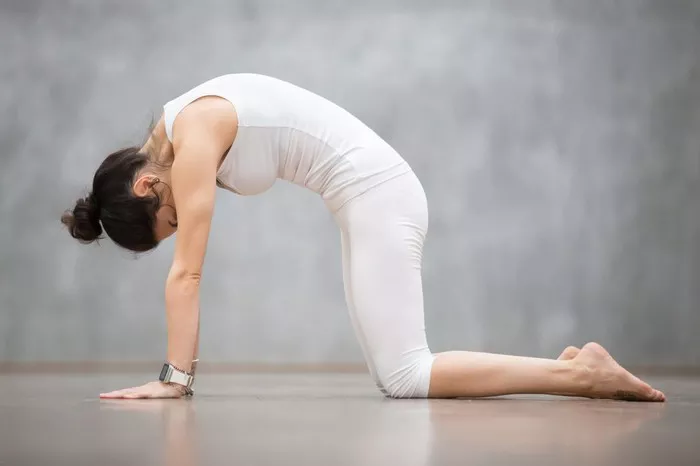Yoga is a practice that offers a multitude of physical, mental, and emotional benefits. Among the vast array of yoga poses, the Eagle Pose, or Garudasana, stands out as a powerful posture that engages the entire body while promoting balance, focus, and flexibility. In this article, we delve into the intricacies of the Eagle Pose, exploring its origins, benefits, variations, and step-by-step instructions for proper execution.
Origins and Symbolism
Like many yoga poses, the Eagle Pose derives its name and inspiration from nature. In Hindu mythology, Garuda is a divine bird and the vehicle of Lord Vishnu, symbolizing strength, power, and freedom. The Sanskrit term “Garuda” translates to eagle, hence the name of the pose.
The Eagle Pose is deeply rooted in the concept of balance and harmony. Just as an eagle soars effortlessly through the sky, this pose aims to cultivate a sense of lightness and grace amidst physical challenge. Additionally, the intertwining of limbs in the posture reflects the unity of opposites—a central theme in yoga philosophy.
Physical Benefits
One of the primary benefits of the Eagle Pose is its ability to enhance balance and proprioception. By standing on one leg while wrapping the other leg around it, practitioners develop stability and concentration. This improved balance extends beyond the yoga mat, helping individuals navigate daily activities with greater ease and poise.
Moreover, Garudasana strengthens the muscles of the legs, including the calves, thighs, and ankles. The act of wrapping one leg around the other engages the inner thighs, promoting muscular endurance and toning. Additionally, the arms are actively involved in this pose, specifically the deltoids and triceps, leading to increased upper body strength.
Furthermore, the Eagle Pose stimulates the lymphatic system and aids in detoxification. The compression of the limbs encourages the flow of lymphatic fluid, facilitating the removal of toxins from the body. This cleansing effect not only promotes physical health but also rejuvenates the mind and spirit.
Mental and Emotional Benefits
In addition to its physical advantages, the Eagle Pose offers profound mental and emotional benefits. The focused concentration required to maintain balance cultivates mindfulness and presence. As practitioners align their breath with movement, they experience a sense of calm and inner tranquility.
Moreover, Garudasana can be a powerful tool for stress relief and anxiety management. The deliberate intertwining of limbs encourages practitioners to let go of tension and surrender to the present moment. This release of physical tension often parallels the release of mental and emotional stress, leaving individuals feeling refreshed and rejuvenated.
Furthermore, the Eagle Pose promotes mental clarity and focus. As practitioners refine their ability to balance and concentrate, they develop sharper cognitive faculties and heightened awareness. This mental acuity extends beyond the yoga mat, enhancing productivity and performance in daily life.
Variations and Modifications
While the traditional Eagle Pose offers a plethora of benefits, variations and modifications allow individuals of all levels to experience its effects. Here are some common variations and modifications:
1. Modified Eagle Pose: For individuals with limited flexibility or mobility, the Modified Eagle Pose is an accessible option. Instead of wrapping the top leg around the standing leg, practitioners can simply cross the thighs and tuck the toes behind the calf.
2. Extended Eagle Pose: To deepen the stretch and engagement in the arms and shoulders, practitioners can extend the arms horizontally, perpendicular to the torso, while in the Eagle Pose. This variation intensifies the pose and challenges the upper body strength.
3. Seated Eagle Pose: For those who prefer a seated posture, the Seated Eagle Pose is an excellent alternative. Sitting on the floor, practitioners can cross one knee over the other and wrap the arms in the same manner as the traditional Eagle Pose.
4. Wall Support: Individuals who struggle with balance can use a wall for support while practicing the Eagle Pose. By gently pressing the back against the wall, practitioners can stabilize themselves and focus on the alignment of the limbs.
Step-by-Step Instructions
Now, let’s explore the step-by-step instructions for practicing the traditional Eagle Pose:
1. Begin standing tall in Tadasana (Mountain Pose) at the top of your mat, with your feet hip-width apart and arms by your sides.
2. Shift your weight onto your left foot and lift your right foot off the ground.
3. Cross your right thigh over your left thigh, either wrapping the right foot around the left calf or hooking the right foot behind the left calf.
4. Extend your arms straight in front of you at shoulder height.
5. Cross your right arm over your left arm, bringing the palms together. If possible, hook the right elbow into the crook of the left elbow.
6. Engage your core and maintain a steady gaze to help with balance.
7. Hold the pose for 30 seconds to one minute, breathing deeply and evenly.
8. To release, unwind your arms and legs and return to Tadasana. Repeat on the opposite side.
Precautions and Contraindications
While the Eagle Pose offers numerous benefits, it may not be suitable for everyone. Individuals with the following conditions should exercise caution or avoid practicing Garudasana altogether:
1. Knee or ankle injuries: The Eagle Pose involves significant bending and twisting of the knees and ankles, which may exacerbate existing injuries.
2. Hip or shoulder injuries: Practitioners with injuries to the hips or shoulders should approach the pose with caution, modifying as needed to avoid discomfort.
3. High blood pressure: The compression of the limbs in the Eagle Pose can temporarily increase blood pressure. Individuals with hypertension should practice with awareness and avoid excessive strain.
4. Pregnancy: Pregnant individuals should avoid deep twists and compressions, making modifications as necessary to ensure comfort and safety.
As with any yoga practice, it’s essential to listen to your body and honor its limitations. If you experience pain or discomfort during the Eagle Pose, ease out of the posture and consult with a qualified yoga instructor or healthcare professional.
Conclusion
The Eagle Pose, or Garudasana, is a dynamic yoga posture that offers a myriad of physical, mental, and emotional benefits. From improved balance and strength to enhanced focus and stress relief, this pose has the power to transform both body and mind. By incorporating the Eagle Pose into your yoga practice, you can soar to new heights of health, vitality, and inner peace.
FAQs:
Why is Eagle Pose so hard?
Eagle Pose (Garudasana) can be challenging due to its combination of balance, strength, and flexibility requirements. The pose involves wrapping one leg around the other while intertwining the arms, creating a compact and balanced shape. This can be difficult for many people due to limited flexibility in the hips, shoulders, and ankles, as well as the need for strong stabilizing muscles. Achieving proper alignment and balance in Eagle Pose often requires practice and patience to overcome these challenges.
Is Eagle pose a hip opener?
Yes, Eagle Pose is considered a hip opener. While it primarily targets the shoulders, upper back, and legs, the crossed leg position in Eagle Pose can help stretch and open the hips, particularly the outer hips and glutes. Regular practice of Eagle Pose can contribute to improved hip flexibility and mobility over time.
Can men do Eagle Pose?
Absolutely, men can do Eagle Pose! Yoga is for everyone, regardless of gender. While certain yoga poses may appear more commonly practiced by one gender or another, there are no restrictions on who can participate in any pose. Men can benefit from the strength, flexibility, and balance aspects of Eagle Pose, just like anyone else.
Is Eagle Pose a heart opener?
Eagle Pose is not typically considered a heart opener. While it does engage the upper back and shoulders, creating space across the chest, its primary focus is on strengthening the legs and improving balance. Heart-opening poses, such as backbends like Camel Pose or Wheel Pose, are designed to specifically stretch and open the chest, shoulders, and front body. However, the engagement of the upper back muscles in Eagle Pose can indirectly contribute to improved posture and chest opening over time with regular practice.

